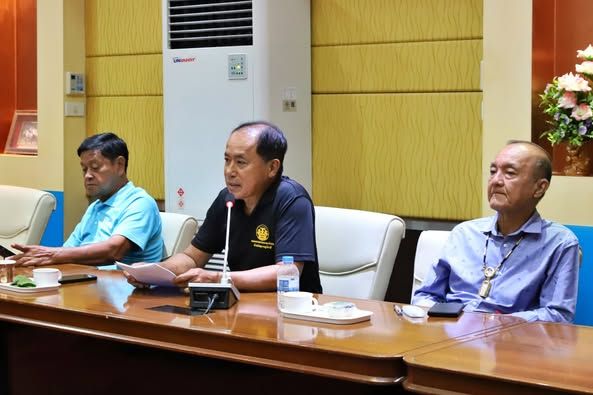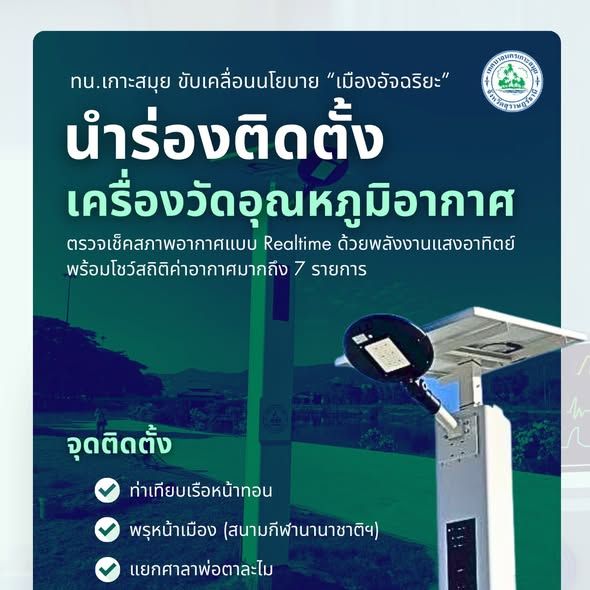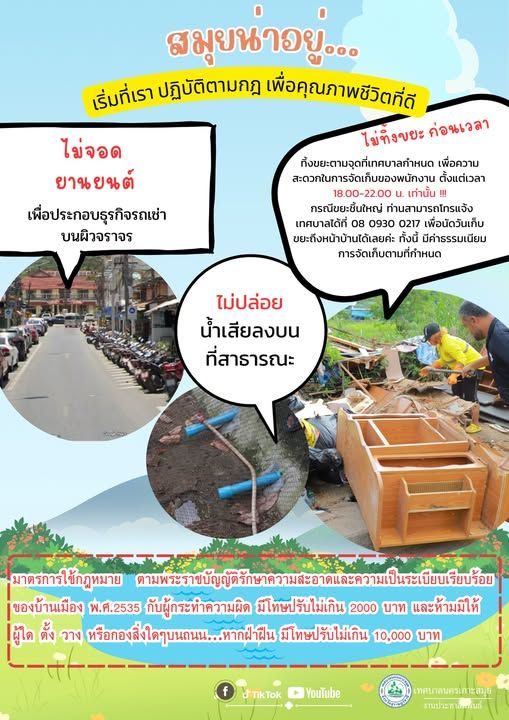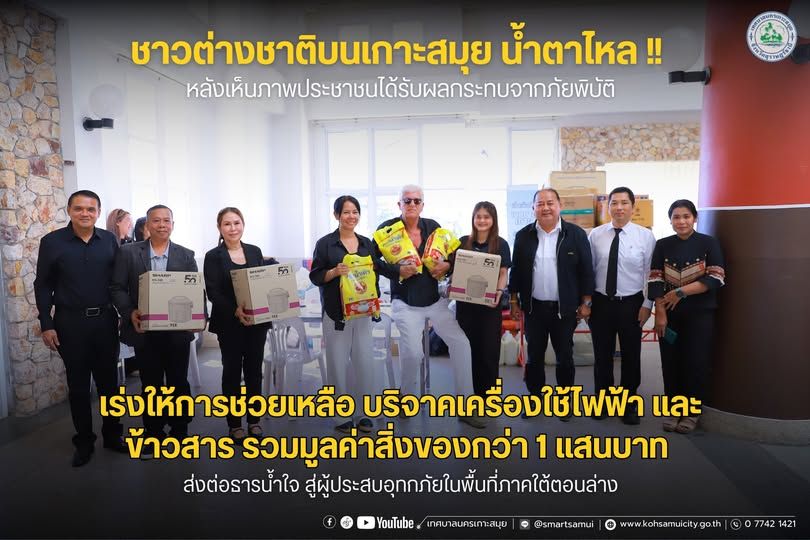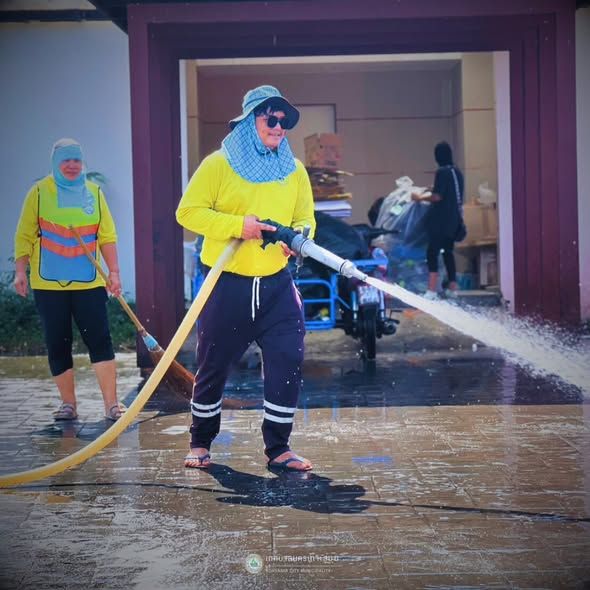Mayor Ramnet Jaikwang led a powerful community development meeting in Koh Samui, bringing together local leaders to discuss innovative solutions for social welfare and sustainable growth. The gathering focused on critical issues like drug prevention, housing initiatives, and youth support programs, demonstrating the municipality’s commitment to creating a brighter future for its residents.
KohSamuiDevelopment #CommunityProgress #SustainableTourism #IslandLife #ThailandTravel #LocalEmpowerment #CommunityInnovation #TravelThailand #KohSamuiCommunity #DestinationDevelopment
Overview of the Meeting
On February 19, 2025, Koh Samui Municipality convened the second meeting of the Community Committee and Network Organizations for the fiscal year 2025. The session was held at the Phet Samui Meeting Room within the Koh Samui Municipality Office and commenced at 9:00 a.m. The event was formally opened by Mr. Ramnet Jaikwang, Mayor of Koh Samui Municipality. The gathering brought together a diverse group of stakeholders including the President of the Municipal Council, council members, department heads, officials from the Social Welfare Division, and key representatives from the municipal community committee.
Purpose and Objectives
The primary aim of the meeting was to foster a participatory approach to community and local development. Organized by the Social Welfare Division, the session sought to:
- Promote active engagement from community members and stakeholders in local development processes.
- Address pressing community issues by aligning municipal efforts with the actual needs of residents.
- Encourage collaboration among government agencies, community networks, and local groups for sustainable development.
Key Topics Addressed
1. Social Welfare Division’s Operational Plans
Municipal officials presented an overview of the Social Welfare Division’s current and upcoming projects. This included service delivery updates, planned initiatives for vulnerable groups, and strategies for enhancing overall social well-being. The division emphasized its commitment to transparency and efficiency in public service provision.
2. Updates to Local Development Plans
Revisions and enhancements to local development plans were discussed, focusing on infrastructure, public health, environmental sustainability, and economic opportunities. Community input was encouraged to ensure these plans reflect real-time needs and priorities of local residents.
3. Drug Prevention and Solution Villages
A significant portion of the meeting focused on the establishment of “drug prevention and solution villages” under the Mother of the Land Fund initiative. This grassroots effort aims to combat substance abuse through community vigilance, education, and rehabilitation support, with a focus on youth and at-risk populations.
4. Roles and Duties of Community Committee Members
Clarifications were provided regarding the responsibilities of community committee members. This segment emphasized the importance of their roles in project implementation, community liaison, and feedback mechanisms. Guidance was also given on eligibility and the process for reimbursement of expenses incurred during official duties.
5. Data Collection on Quality of Life in Slum Areas
Efforts to systematically collect and analyze data on the living conditions in slum areas were discussed. Municipal authorities underlined the importance of accurate data to inform targeted interventions, improve service delivery, and monitor progress toward better living standards.
6. Housing Management Initiatives
Updates were shared on current housing management projects, including the renovation of deteriorated structures, provision of affordable accommodation, and the implementation of safety standards. Community leaders were encouraged to assist in disseminating information and identifying households in need.
Collaborations and Communication
The meeting served as a platform for enhanced communication between the municipal government and the broader community. Attendees received updates on activities and operations from various government agencies, strengthening transparency and inter-agency cooperation.
Participation and Proceedings
The session was marked by active participation from all attendees. Community members, officials, and network organization representatives engaged in productive discussions, shared feedback, and outlined specific action points for the coming months. The meeting proceeded smoothly, reflecting a shared commitment to cohesive and sustainable local development on Koh Samui.
Frequently Asked Questions
Frequently Asked Questions (FAQ)
What were the main goals of the Community Committee and Network Organizations Meeting No. 2/2025 in Koh Samui?
The meeting aimed to foster a participatory approach to local development by promoting active engagement from community members and stakeholders. Its key objectives included addressing urgent community concerns such as drug prevention, housing initiatives, and youth support programs, while encouraging collaboration among government agencies, community networks, and local groups for sustainable development.
How is Koh Samui Municipality addressing drug prevention and social welfare issues?
A major focus of the meeting was the establishment of “drug prevention and solution villages” under the Mother of the Land Fund initiative. These villages are designed to combat substance abuse through community vigilance, education, and rehabilitation, especially targeting youth and vulnerable groups. Additionally, the Social Welfare Division presented plans for enhanced service delivery, support for at-risk populations, and transparency in public services to improve overall social welfare.
What steps are being taken to improve housing and living conditions in Koh Samui’s communities?
The municipality shared updates on current housing management initiatives, including renovating deteriorated buildings, providing affordable housing, and implementing safety standards. There was also an emphasis on collecting quality-of-life data in slum areas to inform targeted interventions and improve living standards. Community leaders play a vital role in identifying households in need and spreading information about these programs.
